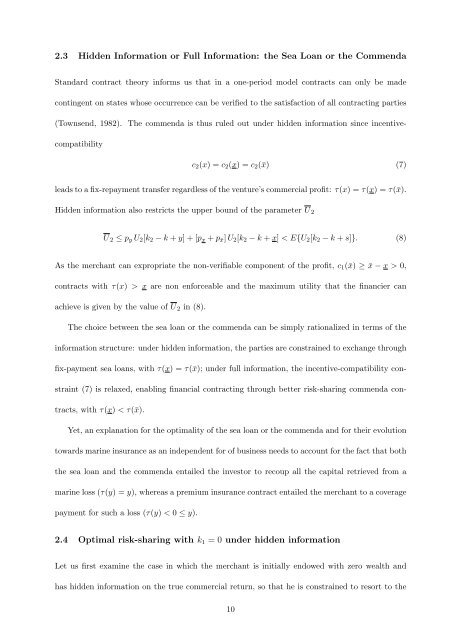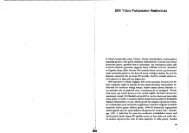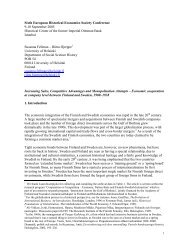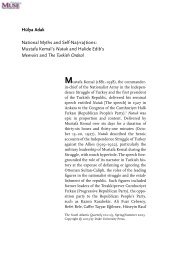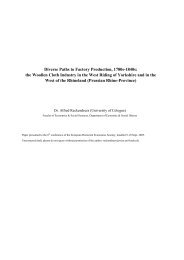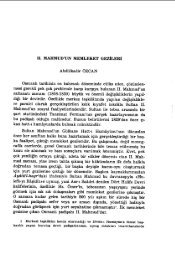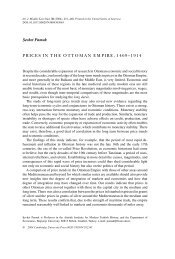The Birth of Insurance Contracts - The Ataturk Institute for Modern ...
The Birth of Insurance Contracts - The Ataturk Institute for Modern ...
The Birth of Insurance Contracts - The Ataturk Institute for Modern ...
Create successful ePaper yourself
Turn your PDF publications into a flip-book with our unique Google optimized e-Paper software.
2.3 Hidden In<strong>for</strong>mation or Full In<strong>for</strong>mation: the Sea Loan or the Commenda<br />
Standard contract theory in<strong>for</strong>ms us that in a one-period model contracts can only be made<br />
contingent on states whose occurrence can be verified to the satisfaction <strong>of</strong> all contracting parties<br />
(Townsend, 1982). <strong>The</strong> commenda is thus ruled out under hidden in<strong>for</strong>mation since incentive-<br />
compatibility<br />
c2(x) = c2(x) = c2(¯x) (7)<br />
leads to a fix-repayment transfer regardless <strong>of</strong> the venture’s commercial pr<strong>of</strong>it: τ(x) = τ(x) = τ(¯x).<br />
Hidden in<strong>for</strong>mation also restricts the upper bound <strong>of</strong> the parameter U 2<br />
U 2 ≤ py U2[k2 − k + y] + [px + p¯x] U2[k2 − k + x] < E{U2[k2 − k + s]}. (8)<br />
As the merchant can expropriate the non-verifiable component <strong>of</strong> the pr<strong>of</strong>it, c1(¯x) ≥ ¯x − x > 0,<br />
contracts with τ(x) > x are non en<strong>for</strong>ceable and the maximum utility that the financier can<br />
achieve is given by the value <strong>of</strong> U 2 in (8).<br />
<strong>The</strong> choice between the sea loan or the commenda can be simply rationalized in terms <strong>of</strong> the<br />
in<strong>for</strong>mation structure: under hidden in<strong>for</strong>mation, the parties are constrained to exchange through<br />
fix-payment sea loans, with τ(x) = τ(¯x); under full in<strong>for</strong>mation, the incentive-compatibility con-<br />
straint (7) is relaxed, enabling financial contracting through better risk-sharing commenda con-<br />
tracts, with τ(x) < τ(¯x).<br />
Yet, an explanation <strong>for</strong> the optimality <strong>of</strong> the sea loan or the commenda and <strong>for</strong> their evolution<br />
towards marine insurance as an independent <strong>for</strong> <strong>of</strong> business needs to account <strong>for</strong> the fact that both<br />
the sea loan and the commenda entailed the investor to recoup all the capital retrieved from a<br />
marine loss (τ(y) = y), whereas a premium insurance contract entailed the merchant to a coverage<br />
payment <strong>for</strong> such a loss (τ(y) < 0 ≤ y).<br />
2.4 Optimal risk-sharing with k1 = 0 under hidden in<strong>for</strong>mation<br />
Let us first examine the case in which the merchant is initially endowed with zero wealth and<br />
has hidden in<strong>for</strong>mation on the true commercial return, so that he is constrained to resort to the<br />
10


